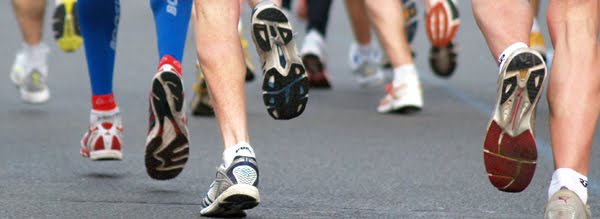Triathlon Cycling - Getting fit for the bike leg
of a triathlon requires four key basic areas.
article by six-time Ironman Triathon World Champion Mark Allen
Cycling for triathlons requires some basic core elements. These are aerobic fitness, position, cadence and strength. Beyond that there are some additional topics like refueling, mindset and overall pacing strategies, but lets take a look at those first four to get your cycling built on solid ground.
AEROBIC FITNESS
This is the bottom ground level base of the base of the cycling performance pyramid. Cycling fitness for triathlons requires key weekly workouts. The first is your long endurance ride with a length that is appropriate for your goal race distance. For sprint races this should be up to about 1.5 hours in length, for Olympic distance up to about 3 hours, for a half Ironman up to about 4.5 hours and for a full Ironman as much as 6-7 hours. This workout not only builds your cycling fitness but is part of the overdistance work that will enable you to have the endurance you need for your race overall.
Next is your tempo or speed session. This is a higher paced effort that is still aerobic during your base phase and then becomes much more intense as it turns into speedwork later. This can be supplemented with some race efforts on the bike either in the form of time trials, fast group rides or hard individual efforts. These will be weekly in your speed phase but should be limited to only once every 3-6 weeks during your base.
POSITION
Even when you are in your base phase, working on getting comfortable and powerful in the aero position will pay off later in your races. The more time you are in that position, the more efficient you become in it. But being comfortable is only partially a function of time spent in it. What will be most important is your actual setup on the bike. And the measure that usually makes a person comfortable or not is the amount of stretch they need to do to reach their elbow pads. The correct position is one that when you are down in it you will find that your upper arm is at the same or steeper angle than the angle of your fork. If your upper arm is more relax or at a more horizontal angle than your fork, then you are too stretched out and will find it tough to stay in the aero position. Make adjustments necessary to bring the arms in closer to the knees if this describes your current position.
CADENCE
The correct cadence rate that is most efficient is going to vary slightly person to person. It will also vary for the same person depending on the race they are targeting. In general, 90-95 rpms is a good starting point for finding that ideal cadence. For those who are large with big muscles they may be most efficient on the lower end of this range, while those with smaller muscles or large cardiovascular capacities will benefit from being in the higher part. Then from race to race, the longer the race the lower the ideal cadence is going to be simply because you are moving away from your peak power output. So for a sprint ideal might be 95-100rpm, and Olympic 90-95rpm, for a half Ironman 85-90rpm and for a full Ironman 80-85rpm. But again this is going to be individual.
STRENGTH
The ability to push on the pedals over and over is something that gets developed through riding and through lifting weights. A good strength program for working all of the leg muscles will help with building power output on the bike. Also there are drills that will help you out with this. One is to do some drills on a stationary trainer where you ride with only one leg at a time. This develops the spin neuromuscular patterns. Do these again in the aero position as much as possible.
Subscribe to:
Post Comments (Atom)


No comments:
Post a Comment